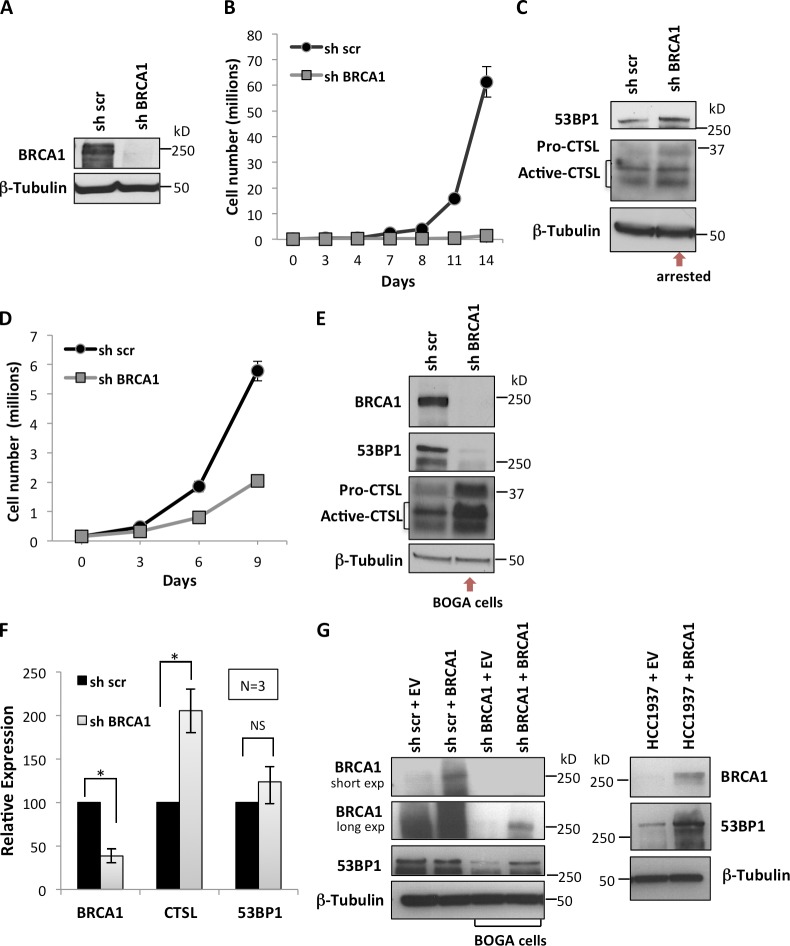Figure 1.
Bypass of growth arrest after BRCA1 loss is associated with CTSL up-regulation and 53BP1 degradation. (A) MCF7 cells were lentivirally transduced with an shRNA for depletion of BRCA1 (shBRCA1) or a control shRNA scrambled (sh scr) and BRCA1 levels were assessed by Western blot immediately after selection. (B) Proliferation rate shows that BRCA1 depletion induces growth arrest. The mean ± SD of three independent experiments is shown (SD too small to show at some time points). (C) Western blots show 53BP1 and CTSL levels in growth-arrested cells. (D) Proliferation rate of BRCA1-deficient cells that overcome growth arrest. The mean ± SD of three independent experiments is shown (SD too small to show at some time points). (E) Western blots show levels of BRCA1, 53BP1, and CTSL in control and BOGA cells (representative experiment of 25 biological repeats). (F) Relative expression of BRCA1, CTSL, and 53BP1 in control and BOGA cells as determined by qRT-PCR. The mean ± SD of three independent experiments is shown. Asterisk shows p-value of statistical significance (*, P ≤ 0.05). NS, not statistically significant differences. (G) Western blots show BRCA1 and 53BP1 levels upon reconstitution of BRCA1 by transient transfection into BRCA1-deficient cell lines—BOGA cells (left) and HCC1937 (right). An empty vector (EV) was used as control. β-Tubulin was the loading control.

